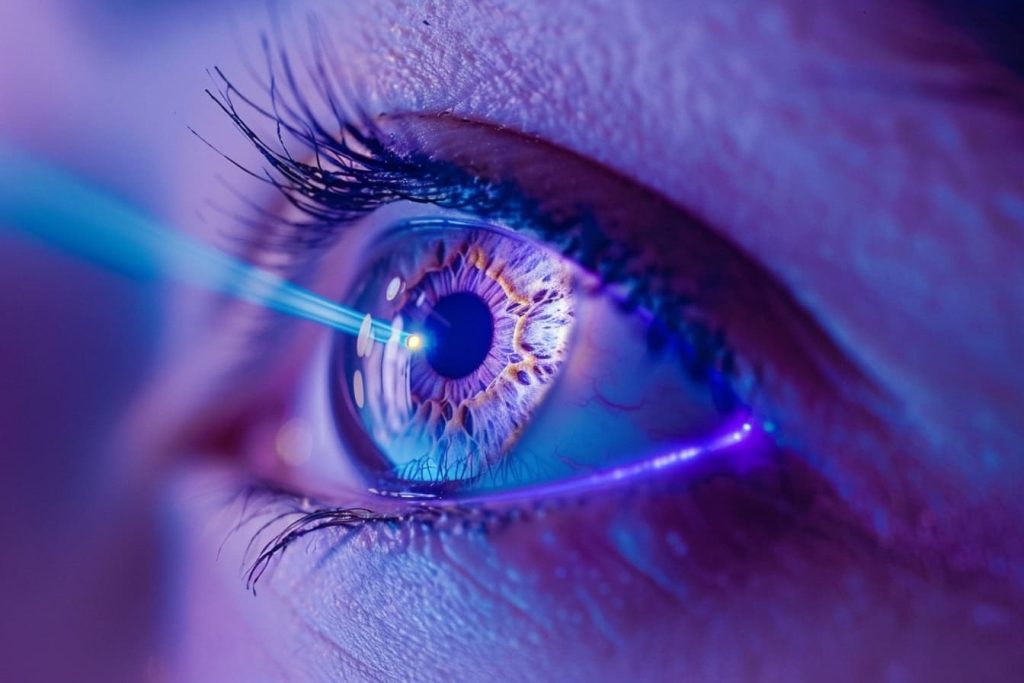Technological advancements have led to the proliferation of laser use in various industries and applications, ranging from medicine and scientific research to manufacturing and entertainment. However, improper use or lack of necessary precautions can pose significant risks to eye health. In this article, we will explore the importance of eye protection when using lasers, the different types of lasers available, and the current regulations governing protection in this context.
Types of Lasers
There are several types of lasers, classified by their wavelengths and applications. Some of the most common include:
- Diode Laser: Used in medical and communication applications.
- CO2 Laser: Widely used in surgeries and medical procedures.
- Argon Laser: Employed in ophthalmology and dermatological treatments.
- Nd:YAG Laser: Used in eye surgeries and skin treatments.
- Fiber Optic Laser: Applied in telecommunications and endoscopic surgeries.
Importance of Eye Protection
Laser radiation can cause irreversible eye damage in fractions of a second. It is essential to understand the risks and use appropriate eye protection to prevent potential injuries. The choice of protective equipment will depend on the type of laser and its specific application.

Key Criteria for Choosing Eye Protection Against Laser Radiation
Choosing the appropriate eye protection against laser radiation is crucial to ensure eye safety in environments where this technology is used. Here, we explore the key criteria to consider when selecting eye protectors to shield the eyes of workers and professionals interacting with lasers.
Laser Wavelength and Power:
Lasers emit radiation at different wavelengths, and eye protection must be designed to specifically filter the laser’s wavelength. Additionally, the laser’s power influences the choice of protector, as higher power requires greater attenuation.
Attenuation Level:
Attenuation refers to the eye protector’s ability to reduce laser radiation intensity. Protectors must comply with the attenuation standards set by EN207 regulations. The attenuation classification will indicate the amount of radiation the protector can effectively block.
Filter Type:
There are different types of filters designed to protect against various laser wavelengths. Protectors can be absorptive, reflective, or a combination of both. It is essential to select the filter type that matches the specific application and type of laser used.
Coverage Area:
Protection should fully cover the eyes and surrounding vulnerable areas. Eye protectors must provide adequate coverage to prevent accidental exposure of the eyes to laser radiation from different angles.
Working Conditions:
Specific working conditions, such as temperature, humidity, and the presence of chemicals, can affect the effectiveness and durability of eye protectors. Ensuring that protectors are resistant to adverse conditions will guarantee their efficacy over time.
Comfort and Ergonomics:
Comfort is important for continuous use of eye protectors. They should be ergonomic, fit properly to the facial contour, and not interfere with peripheral vision. This ensures that workers can perform their tasks efficiently without compromising safety.
CE Marking and Regulatory Compliance:
To ensure safety in laser use, there are international standards and regulations that establish requirements for eye protection. Two key standards are EN207 and EN208:
- EN207: Defines the requirements for eye protection filters against laser radiation. It specifically classifies filters based on their attenuation capacity and the wavelength they protect against.
- EN208: Focuses on laser safety glasses and protectors designed for low-power applications. It sets requirements for visibility, impact resistance, and side protection.
It is essential that eye protectors comply with established standards, especially EN207 and EN208. The CE marking indicates that the product meets essential health and safety requirements, providing a guarantee of quality and regulatory compliance.
Usage and Maintenance Instructions:
Protectors should come with clear instructions on their use and maintenance. Users must follow these guidelines to ensure the continuous effectiveness of the eye protectors and prolong their lifespan.
In conclusion, selecting eye protectors for laser radiation protection requires careful evaluation of various factors. By considering the laser wavelength, power, attenuation level, and other criteria, appropriate protective equipment can be chosen to ensure eye safety in environments where lasers are used.
Risks of Using Lasers Without Protection
Using lasers without proper eye protection can have severe consequences. Associated risks include:
Retinal Injuries: Laser radiation can damage the retina, causing permanent vision loss.
Ocular Burns: Direct exposure to laser radiation can cause burns to the cornea and other eye structures.
Damage to Central and Peripheral Vision: Depending on the intensity and wavelength, the laser can affect both central and peripheral vision.
In conclusion, eye protection in laser use should not be underestimated. With the variety of lasers available and associated risks, it is crucial to select appropriate protection according to established regulations. By adopting preventive measures and adhering to regulations, we can enjoy the benefits of lasers without compromising visual health.
